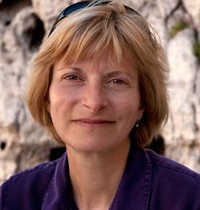NOTE: Images in this archived article have been removed.

NASA’s twin-satellite mission known as GRACE has helped scientists estimate how much water is being depleted from the world’s major aquifers, but there is great uncertainty about how much water these aquifers hold. Image courtesy of NASA.
Imagine if your bank statement arrived each month and told you how much money you had withdrawn and deposited, but told you nothing about how much money you had at the beginning or end of the month.
You’d know whether your balance had grown or shrunk, but you’d have no idea whether you could afford to buy a new house, take a vacation, or make it through that last year of college without bussing tables on the weekends.
This is pretty much the state we’re in with the world’s groundwater accounts, which supply 2 billion people with drinking water and irrigate a large share of the world’s food.
“[I]n most cases, we do not know how much groundwater exists in storage,” write the authors of a
study published last month in
Water Resources Research (WRR), a journal of the American Geophysical Union.
As a result, we’re clueless about how long we can keep drawing down these water reserves before they run out.
And we are indeed drawing many of them down.
One-third of the world’s 37 largest aquifers are highly stressed to over-stressed, according to a companion
study published in the same issue of WRR.
The eight most highly stressed aquifers receive almost no natural recharge to offset human use – including aquifers in Saudi Arabia, northwestern India and Pakistan.
Scientists at the University of California at Irvine led both studies, with doctoral student Alexandra Richey serving as lead author. Other team members came from NASA, the National Center for Atmospheric Research, National Taiwan University and UC Santa Barbara.
Satellites Help Measure Depletion
Thanks to a NASA satellite mission launched in 2002 called GRACE (for Gravity Recovery and Climate Experiment), scientists have gotten some good estimates of changes in water storage in key parts of the world. GRACE deploys a pair of satellites to measure variations in Earth’s gravity, which is influenced by the weight of water.
In a 2014
commentary in
Nature Climate Change, Jay Famiglietti, senior water scientist at the NASA Jet Propulsion Laboratory in Pasadena, California, professor at UC-Irvine and a coauthor of both WRR studies, summarized depletion rates derived from GRACE data for nine important aquifer systems around the world.
Taken together, the depletion rates for the nine groundwater basins totaled more than 77 billion cubic meters per year. That’s equivalent to losing more than four Colorado Rivers worth of water annually.
Nearly all of these aquifers supply irrigation water to agricultural regions crucial to national and global food security – from the U.S. High Plains to Northwestern India to China’s North Plain.
But without knowing how much water each aquifer holds in storage to begin with, there’s no way to gage how long such depletion can go on, and which areas might run out of water first.

The 37 largest aquifers in the world. Those colored in red and orange are the most stressed. Knowledge is limited about how much water these aquifers contain. Image courtesy of University of California-Irvine.
Even more troubling, for a number of aquifers examined by the UC-Irvine team the historical estimates of groundwater storage exceeded more-recent estimates by several orders of magnitude. That means in many areas the actual groundwater supply is much less than previously thought.
The main reason is that historical estimates are fairly crude. They often assumed, for example, that an aquifer’s water-holding capacity was constant across its whole area, whereas in reality it can vary quite a bit.
The team found, for example, that depending on which storage estimates were used, the time-to-depletion for the Northwestern Sahara Aquifer, which underlies Algeria, Libya and Tunisia, ranged from 10 years to 21,000 years.
Likewise, when new groundwater storage estimates are taken into account, two groundwater systems of great importance to food security in India and China – the Ganges and North China aquifers, respectively – appear more vulnerable to depletion than previously thought.
Lastly the researchers point to the Ogallala in the U.S. High Plains as an example of how variable an aquifer system can be across its geographic area.
The Ogallala extends from southern South Dakota to northwest Texas and supplies water to
27 percent of U.S. irrigated land. Its northern portion gets good recharge and, despite its use for large-scale irrigation, is relatively stable. The southern portion, however, is highly vulnerable to depletion. Some areas could run out of water in 30 years.
Knowing our Groundwater Accounts
With farms and cities increasingly
turning to groundwater sources, especially during
prolonged droughts when surface supplies shrink, we clearly need to get a better handle on just how large our groundwater reserves are so that we can better plan and manage their use.
What’s needed is a coordinated effort to explore, map and assess the planet’s aquifers – including more accurate estimates of how much water is in storage, what share of the stored water is technically recoverable, and how the groundwater’s quality varies with depth.
NASA’s Famiglietti makes the point that very few of the planet’s aquifers have been explored in the thorough manner that oil reserves have.
The bottom line: If water is to the 21st century what oil was to the 20th, then global food security and regional peace and stability depend on filling this knowledge gap soon.








